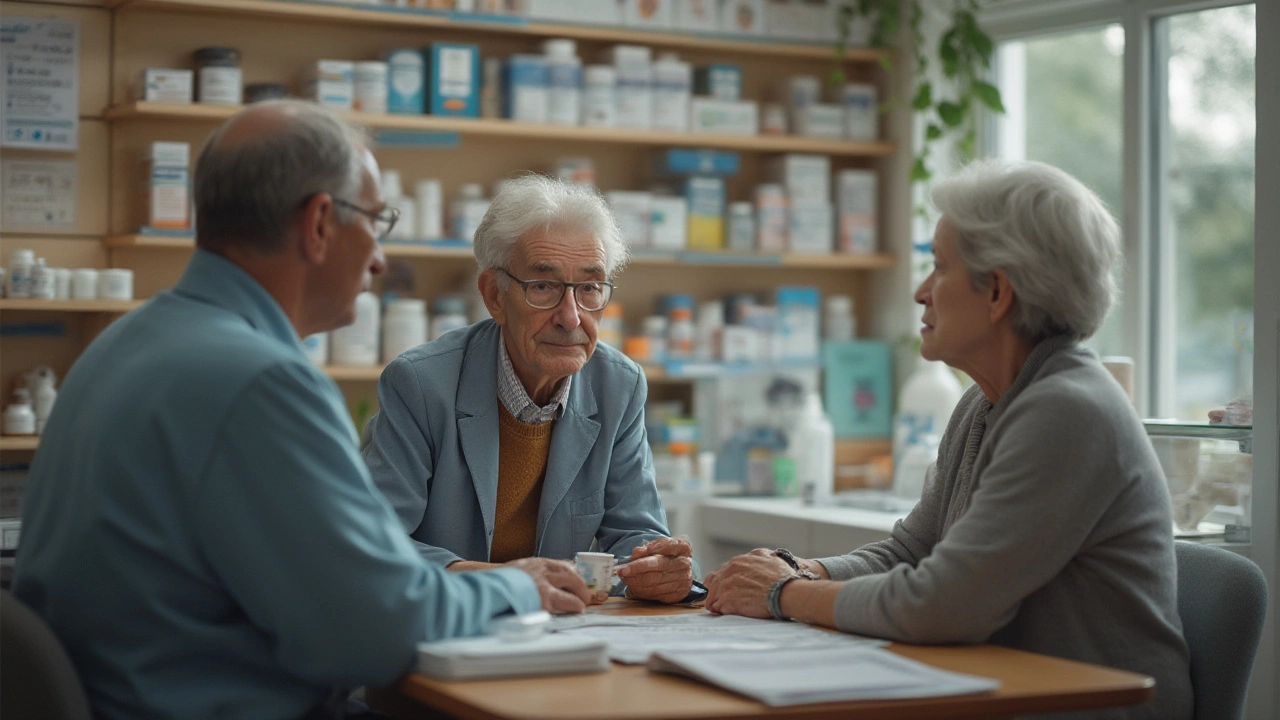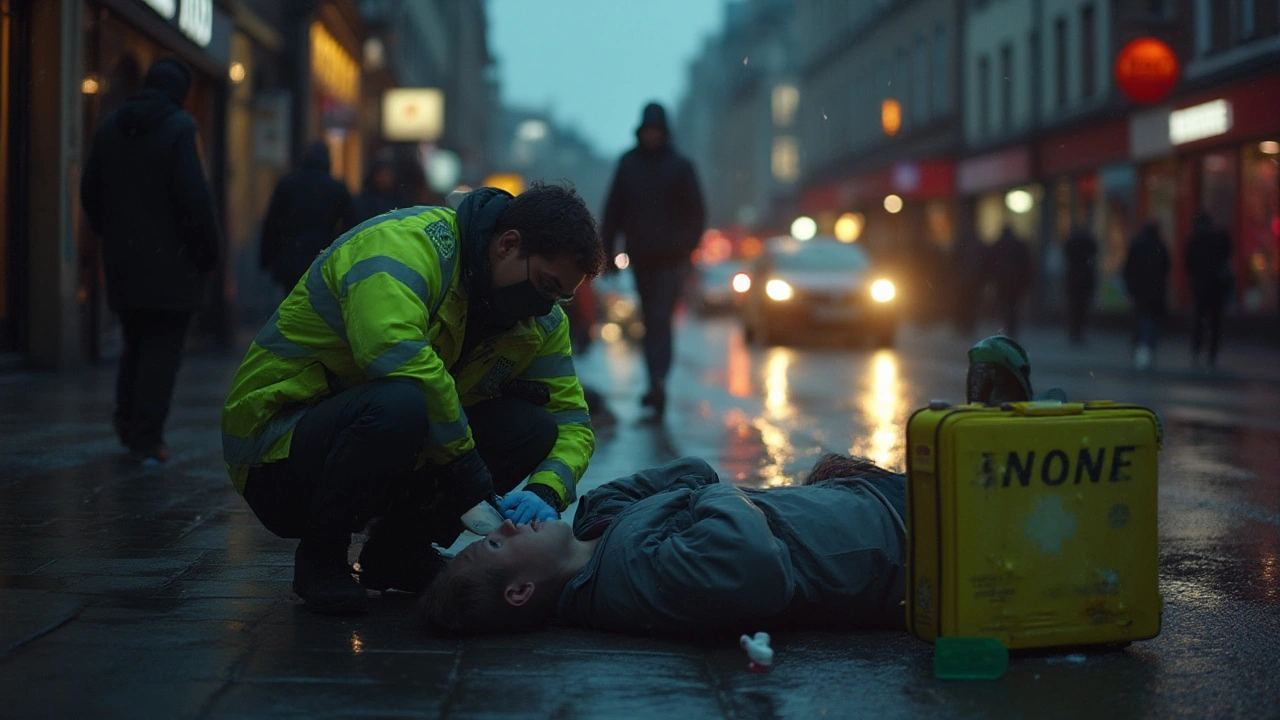No one’s morning coffee ever kicks off with thoughts of earthquakes, tornadoes, or pandemics. It’s the everyday comforts—navigating traffic, annoying emails, maybe the joy of a croissant. Then chaos strikes. Shelves empty, phone lines buzz, hospitals overflow. In times like this, medication can tip the scale between safety and disaster. Yet most people don’t have a clue what to keep in their cabinet, what really works in an emergency, or how fast simple pills become gold when help is hours—or days—away.
How Pharmaceuticals Save Lives in a Crisis
During a disaster, the most valuable thing after water isn’t food. It’s life-saving medicine. When the 2017 hurricanes hit Puerto Rico, pharmacies closed, hospitals lost power, and a staggering number of deaths were linked to interrupted access to medication—not just injury. Chronic illness doesn’t disappear in chaos; diabetes keeps demanding insulin, asthmatics still need inhalers, people with epilepsy require anticonvulsants. According to the CDC, more than 133 million Americans depend on prescription medications for ongoing health. The first 72 hours after a major event are the most critical, because that’s when medical resources are stretched to their thinnest.
Even minor emergencies can expose how fragile access to drugs is. In 2021, a winter storm knocked out Texas’ power grid and wiped out refrigeration across thousands of homes—destroying insulin stocks overnight. One story stands out: a woman in Houston, unable to reach her pharmacy, resorted to rationing her son’s asthma medication. Such stories aren’t rare. During the early COVID-19 panic, sales of fever reducers like acetaminophen spiked 300% within weeks, and local shortages lasted for months in some cities.
Quick fact: The WHO keeps a Model List of Essential Medicines for emergencies, updated every two years. It includes everything from antibiotics to psychiatric drugs—tools a community needs to weather crisis. Not every country has these drugs easily available, but the principle is the same: stock what saves your life before you think you’ll ever need it.
Building the Ultimate Emergency Pharmaceutical Kit
Most first-aid kits are famously underwhelming. A few adhesive bandages, maybe an ancient roll of gauze, and that weird tube of burn cream. Real emergency pharmaceutical kits go much further. They’re a mix of prescription essentials, over-the-counter (OTC) drugs, and items you can’t buy at just any store.
If you’re planning for yourself or a family, start with the basics: prescription meds you need day-to-day, with at least a two-week extra supply. A 2020 study from the University of Utah Health found that households who kept even a one-week reserve of medicines during the pandemic reported less anxiety and avoided risky ER visits.
Here’s what such a kit should include:
- Emergency pharmaceuticals prescribed specifically for your conditions (think: insulin, heart meds, seizure drugs).
- OTC pain relievers (acetaminophen, ibuprofen, aspirin—the holy trinity of fevers and pains).
- Allergy treatments (antihistamines, epinephrine for severe allergies if you have an EpiPen prescription).
- Respiratory aids (albuterol inhalers or nebulizer solutions).
- Antibiotic ointments and antiseptics (infection prevention is huge if medical help is slow).
- Anti-nausea and anti-diarrheal meds (dehydration is a top killer in disaster zones).
- Electrolyte packets and oral rehydration salts—dehydration sneaks up fast if you’re sick or can’t access clean water.
- Basic antibiotics (only if prescribed and with a doctor’s say-so, as misuse creates dangerous resistance).
Here’s a tip: Rotate your stock. Medicines expire, and in a survey by Consumer Reports, nearly 30% of adults admitted they didn’t check their medication dates. Use a sticky note method—label when to swap out meds and check at least every six months.

Common Emergency Medications: What They Do, When to Use Them
So what actually counts as emergency medicine? It’s not just about antibiotics and painkillers. There’s a wide world of options, each with a critical use:
- Epipen (Epinephrine): Life-or-death for anyone with a severe allergy. The kick is quick, buying time till emergency help arrives. In Australia, where venomous insects are common, carrying an Epipen is routine.
- Inhalers (Albuterol, Salbutamol): Breathing trouble can escalate from mild wheezing to life-threatening in hours, especially for children. Quick-acting inhalers offer a way out before things spiral.
- Seizure rescue meds (Diazepam, Midazolam): For epilepsy, first aid isn’t just water and comfort—it’s a timely dose of fast-acting medication.
- Antibiotics (Amoxicillin, Doxycycline): Only with prescription, as misuse can worsen things, but a short course can knock down infection when doctors are far away.
- Pain and fever reducers: A simple fever can spiral dangerously in heatstroke or infection. Ibuprofen or acetaminophen isn’t just for headaches—it’s frontline defense.
- Oral rehydration salts: Used worldwide in disaster zones by WHO and Unicef, especially for kids. In Haiti’s 2010 earthquake, dehydration from diarrhea was a top killer among children.
Of course, everyone’s needs vary. Someone with bipolar disorder might need emergency antipsychotics on hand. Diabetics know how precious insulin is. Here’s a cheat sheet table of what some meds do in emergencies:
| Medication | Purpose in Emergency | Notes |
|---|---|---|
| Insulin (various types) | Regulate blood sugar in diabetics | Requires cold storage |
| Albuterol (inhaler) | Relieve asthma/breathing attacks | Works within minutes |
| Epinephrine (EpiPen) | Treat severe allergies | Life-saving for anaphylaxis |
| Amoxicillin | Fight infection | Doctor’s prescription needed |
| Oral rehydration salts | Prevent/treat dehydration | Especially vital for kids/elderly |
| Acetaminophen/Ibuprofen | Control pain/fever | Check max daily dose |
Tip: If you have a pet, don’t forget about their emergency medicines too. Many disasters see a spike in animal emergency room visits for lack of pet medication. Dogs with epilepsy or allergies are at risk just like their owners.
Storing Medications: How to Keep Them Safe and Potent
Just stockpiling meds isn’t enough. Heat, moisture, light—these three enemies can destroy a stockpile before you ever need it. After Hurricane Katrina, FEMA found nearly 20% of sent medicines were unusable because of improper storage.
Some meds are more fragile than others. Insulin must stay cool, ideally between 36 to 46°F. An inhaler dropped in the heat of a car loses effectiveness. Certain antibiotics, when exposed to humidity for days, degrade faster than their printed expiration date tells you. So, how to build a pharmacy that lasts?
- Store all medications in a cool, dry, dark place. Skip the bathroom—humidity is a med killer. A closet or kitchen drawer away from heat works best.
- If you need to refrigerate, consider a small camping cooler with ice packs (swap the packs every 1-2 days in case of power outages).
- Always keep prescription labels and instructions. In an emergency, it’s easy to mix up lookalike pills.
- For people who travel or live in disaster-prone regions, portable medication safes, vacuum sealing, or silica gel packs can extend shelf life.
- Know your expiration dates. Most meds last beyond their date, but potency drops over time. A 2020 FDA study confirmed that most pills are safe for months, even years, after expiration—but there are exceptions (especially for nitroglycerin, insulin, liquid antibiotics).
Keep a written record of medicine types, doses, and when you last replenished. That notebook becomes gold if you end up in medical care without your usual pharmacy history.
Watch for recalls. The FDA posts alerts weekly. During supply chain emergencies, there’s a spike in counterfeit and expired drugs sneaking into online or pop-up pharmacies. Stick with trusted sources—don’t buy vital meds on sketchy social media ads.

Real-World Emergency Scenarios: Lessons Learned
Stories from the field always hit hardest. When a tornado swept through Joplin, Missouri in 2011, local hospitals ran on backup generators, and most pharmacies were flattened. A local nurse told the Associated Press that diabetic residents had to share sparse insulin vials, sometimes using expired supplies—several ended up in crisis before Red Cross aid arrived.
After the 2004 Indian Ocean tsunami, international teams reported scores of children dying of dehydration—not from lack of water, but because nobody had rehydration salts or anti-diarrheal medication. The simplest drugs, like zinc supplements or sugar-salt mixes, could have saved hundreds.
It’s not always about natural disasters, either. During the 2014 conflict in Eastern Ukraine, pharmacies shut down, and many with chronic conditions depended on smugglers for heart or hypertension meds. In Venezuela (2017-2019), surveys showed 80% of pharmacies routinely out of stock—crowds would wait hours for painkillers or antibiotics.
Lesson learned? Don’t count on supply chains, even in wealthier countries. The best-prepared communities often build neighborhood “med hubs”—volunteers who keep emergency stocks and share with vulnerable residents. Some cities, like Tokyo, train “first-aid pharmacists” to deploy during festival seasons and earthquakes.
Emergency preparedness isn’t just an individual game. A 2022 Red Cross report said that neighborhoods with shared emergency plans had 40% lower rates of preventable post-disaster hospital visits.
- Get to know your local pharmacist. They often give advice on safe substitutes if your usual med runs out.
- If you take specialty medication, ask your doctor for a backup plan: What’s the next-best choice? Can they write you an emergency supply?
- Communities can pool resources—organize a local group to coordinate supplies of key pediatric, geriatric, and chronic-condition meds.
One never knows when disaster will strike, but being calm and methodical about emergency pharmaceuticals could save your life or someone you love. Knowing what you have, how to use it, and how to protect your supply can mean everything when help is still hours—or days—away.





